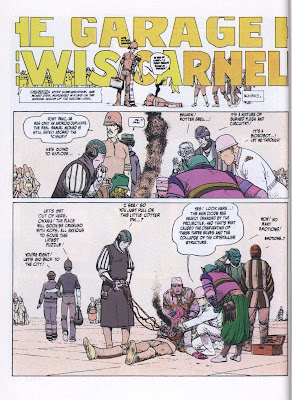
September is Outbreak Month.......at the PorPor Books Blog !
Book Review: 'The Devil's Kiss' by John Hyde
3 / 5 Stars
'The Devil's Kiss' (160 pp) was published in the UK by the New English Library in August 1984. The striking cover art is provided by Les Edwards.
The novel is set in London in the early 1980s. As it opens, two laborers are investigating the breach of a sewer tunnel adjoining the Northern Line; when a wall collapses, it reveals a WWII-era command post that had been secreted under the grounds of Bunhill Fields cemetery.
As the laborers nervously explore the command post, one of them comes across a glass vial filled with an amber liquid......which he promptly breaks. When circumstances conspire to collapse the entire sewer line, a group of unwitting Londoners are exposed to the vial's sinister contents.
Andy Wise, a Detective-Sergeant with the city's Metropolitan Police, is ordered by his superiors to track down the exposed people. Wise soon discovers that something is going badly wrong, for the people exposed to the vial are finding themselves feverish, covered in weeping pustules, their skin turning black and blue. Complicating matters is that others exposed to the vial's contents find themselves subconsciously spurred to commit all manner of gruesome crimes, crimes which they completely forget having committed upon waking from their trance.
As Andy Wise and the Metro Police struggle to understand the burgeoning crisis emerging in London, figures in the highest levels of the British government are taking their own clandestine steps to stop a contamination event that threatens to turn the entire country into a graveyard..........
Not unsurprisingly, 'The Devil's Kiss', coming from the New English Library, is not so much an 'outbreak' novel, as it is a horror novel....... dealing with an outbreak. Author Hyde takes his inspiration from James Herbert's 1975 classic The Fog by having his infected people carrying out splatterpunk-style atrocities.
Hyde also depicts high-ranking British politicians as perfectly willing to sacrifice the lives of London's citizenry, giving the novel a downbeat, paranoid flavor more in keeping with a novel from the 70s than from 1984.
Although 'The Devil's Kiss' is only 160 pages in length, Hyde writes with economy, and the plot takes more twists and turns that most contemporary horror novels negotiate with three times the page count. If you're a fan of the NEL horror novels, or simply looking for a low-maintenance thriller, this one is worth searching out.


















































































.jpg)

















